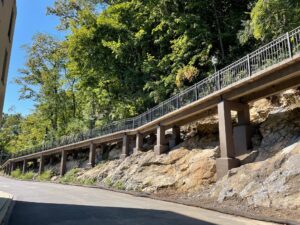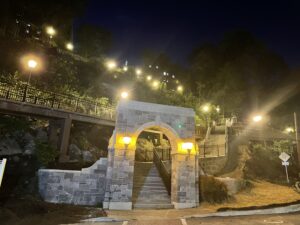Easton/College Hill Escarpment Hike – Bike Trail and Historic Step Refurbishment

Bimodal trail

College Hill escarpment
Update: Safety lighting depicted in revised College Hill escarpment renderings
(Updated Feb. 2024) — Supported by a grant from the Commonwealth Financing Authority’s Multimodal Transportation Fund, the escarpment project made substantial improvements to the pedestrian pathway that connects downtown Easton with the College Hill neighborhood, including by reconditioning the historic stairs that
serve as the primary city-campus transition.
In addition, Lafayette constructed a new walking and bicycling trail between the Karl Stirner Arts Trail and South College Drive (near the intersection with McCartney Street). As part of this project, about 1,100 feet of new trail was constructed, creating a six-foot-wide pathway, and about 650 feet of existing trail was replaced. In addition to safety lighting, amenities include new seating areas and locations for displaying artwork.
The project was completed and a dedication ceremony was held on Sept. 28, 2023.